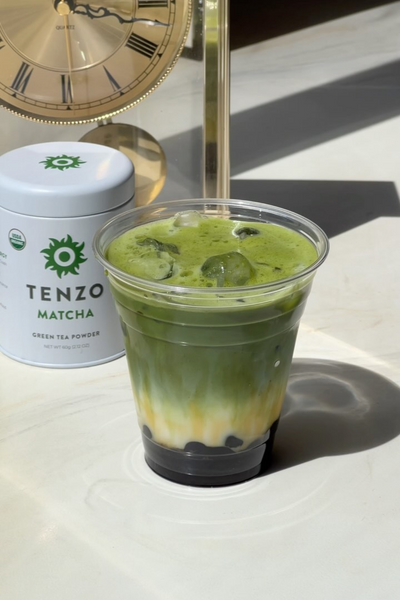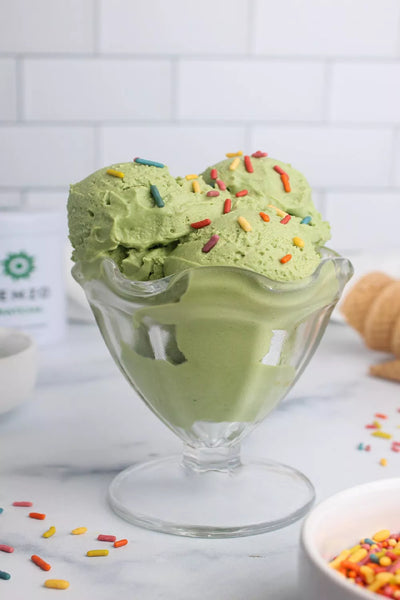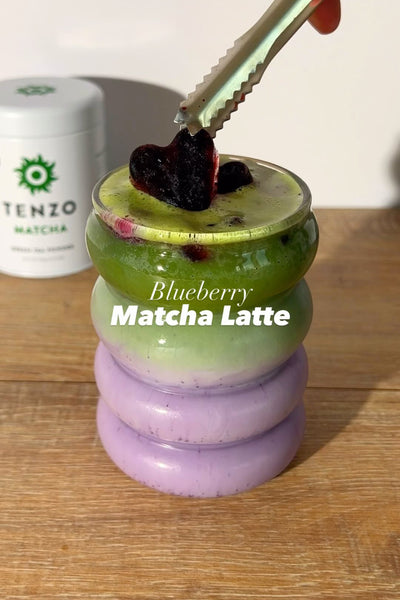Ceremonial Grade Matcha: The Different Matcha Grades Explained

If you've ever looked at a fancy coffee shop menu, you probably understand how difficult it is to interpret and decipher the different kinds of drinks. When you’re new to matcha, looking at the grades might feel like that fancy coffee shop experience all over again.
All matcha is made from the same plant, but every grade of matcha is different. Each grade is intended to be used for a different purpose. Grades can be used to denote color, texture, potential uses, and overall quality of the matcha. Ceremonial grade matcha is among the highest quality, most versatile varieties of matcha.
Describing something as ”ceremonial grade” makes it sound formal and intimidating, but that’s not the case. Ceremonial grade matcha’s name comes from its rich and vibrant history as an important staple in traditional Japanese culture. Times have changed, but great matcha has always remained the same.
What Is Matcha?
Matcha is very young tea leaves, harvested while they’re still a vibrant shade of green. The leaves are ground into a very fine green powder and blended with water. Matcha is different from other types of tea because you actually drink it, rather than just steeping the leaves. You don’t really drink any other kind of tea - you drink water infused with that kind of tea. Matcha is unique in that you ingest the entire leaf, and therefore receive all the beneficial antioxidants of the plant.
How is Matcha Produced?
Matcha tea takes a lot more care to produce than other types of teas. The bushes are grown away from direct sunlight, allowing the leaves of the tea to retain as much of their green chlorophyll as possible.
While the leaves are still young, they’re harvested by hand, and the stems and veins are manually removed from the leaves. The leaves are taken into a dark place to prevent sun exposure and ground into a fine powder. Making matcha is an artisanal craft rather than a factory farm job. This is a very delicate and labor-intensive process, and it’s part of the reason why matcha is usually pricier than your average green tea.
The History of Matcha
Matcha was originally consumed in China during the Tang Dynasty, but was popularized by the Song Dynasty from the tenth through the thirteenth centuries. A Japanese Buddhist monk called Myoan Eisai is said to have studied religion during this dynasty, returning back to Japan with green tea seeds and a recipe for matcha.
Esai first grew matcha at the Kamakura Shogun temple in Kyoto, where it was cultivated in modest qualities and regarded as a luxurious treat. Zen Buddhists adapted the method of growing the plant, preferring to sow it in the shade. Matcha is still grown this way until this day.
Fast forward to the 1500s, when many Zen Buddhists and students in Japan had become familiar with matcha. Murata Juko first conceived the Japanese tea ceremony as a way to enjoy matcha, and Zen Master Sen no Rikyu popularized the practice.
The Japanese Tea Ceremony, known as Sado, is held together by the four principles of harmony, respect, purity, and tranquility. Sado is a zen and meditative activity where participants drink tea and practice mindfulness. Matcha is the tea of choice in these ceremonies, and that’s why the highest grade of artisanal matcha is called ceremonial matcha.
The Grades of Matcha
Matcha has two main grades: ceremonial and culinary. Culinary matcha has several subgrades, with each intended to be used in a specific way. If you want to know how to choose the best matcha, you need to know the difference between the grades and subgrades. Matcha you would cook with isn’t necessarily matcha you should drink, but matcha can be used for anything.
Ceremonial Grade Matcha
Ceremonial grade matcha is made to drink, and it’s been made the same way for hundreds of years. Ceremonial grade matcha is naturally sweeter, making it perfect for drinking without any added sugar or honey. This grade of matcha is the most intricate process to cultivate and is very labor-intensive to turn from leaves into tea.
No other grade of matcha can compare to ceremonial grade matcha. It takes a true love of the art and dedication to produce the perfect matcha powder. Other grades of matcha simply won’t work as well or taste as delicious when blended with water and enjoyed without any other ingredients.
Culinary Matcha
Culinary matcha is the least expensive variety of matcha, but that doesn’t indicate that the tea is of low quality. It just means it isn’t as meticulously tended to as ceremonial grade matcha. Since this variety of matcha is meant to be used in cooking or in conjunction with other ingredients, it doesn’t need to be perfectly harvested and finely ground the way ceremonial matcha does.
Classic Matcha
Classic matcha is what most people use in their kitchens. If you want a universally agreeable grade of matcha to cook with, classic grade is perfect. This is the kind of matcha you can add to your green smoothie for an antioxidant boost.
Kitchen Matcha
Kitchen matcha is bitter and comes in large pieces. It’s made for brewing and creating extracts. Kitchen matcha is to regular matcha like baker’s chocolate is to regular chocolate. It’s best for when matcha is being used as a minor component of something. It’s much harder to work with than other varieties of matcha.
Ingredient Matcha
Ingredient matcha contains a blend of young matcha leaves and older, darker matcha leaves to create a hearty and robust flavor profile. This strong profile lends itself well to thicker recipes, like ice cream or buttercream. It’s particularly useful for flavoring dairy products.
Cafe Matcha
Cafe matcha has a concentrated flavor and a less fine consistency. It holds up well in higher temperatures. If you want to cook or bake with matcha, this is your grade. Cafe matcha works well in cakes or muffins, but can also be used to make lattes or shakes.
Premium Matcha
Premium matcha is the grade of matcha that many coffee and tea shops use to create matcha lattes or blended drinks. It’s less expensive than ceremonial matcha and allows them to keep their costs down with as little sacrifice in quality as possible.
Premium grade matcha is the second harvest of the plant. It’s very similar to ceremonial matcha, but it’s slightly more bitter. People disguise the bitter taste with latte flavors and sugar.
Ceremonial Grade Matcha Does it All
Don’t feel confused by the number of grades and subgrades. You can use ceremonial matcha for everything. It’s the purest, sweetest, finest quality of matcha. You might find that you use less sugar when you use ceremonial grade matcha in a latte because its inherent sweetness shines through.
You can use ceremonial grade matcha to make everything from pancakes to ice cream. It’s a versatile cooking ingredient that imparts the benefits of its powerful antioxidants and a gentle energizing effect into everything you eat and drink. If you want to keep it simple, ceremonial grade is all you need.
If you intend to cook with matcha on a commercial scale, it may be more cost-effective to use second-harvest premium matcha. This is especially true if you’re going to be adding sugar to your recipes. The sugar in your cake or ice cream may make the bitter notes of premium grade matcha less detectable.
The Takeaway
Ceremonial grade matcha is perfect for every home use of matcha. If you’re looking to experience the delicate flavor of handcrafted tea, ceremonial matcha is the perfect way to get an authentic experience. Tenzo’s Organic Ceremonial Matcha will provide that experience. We put our lives on hold to go to Japan to learn the art of matcha from a Japanese tea master, and we made that art our lives.
Our tea is grown organically in Japan, harvested by hand, and stone-ground into a delicate powder. Every cup of Tenzo provides 36 mg of natural caffeine, amino acids, and a steady supply of metabolism-boosting antioxidants to keep you in a steady supply of natural energy without the jitters or the crash.
Whether you want to pay homage to Zen masters who practiced mindful Sado or simply enjoy a cup of morning matcha in peace, Tenzo’s ceremonial grade matcha is the most important part of your routine.
Sources:
History of Zen Buddhism | Zenlightenment










